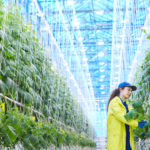I get it. I’ve lived in the St. Louis area for most of my adult life and understand the concerns that many here have about the potential Bayer-Monsanto merger.
Are we going to lose one of the region’s largest employers? Will Monsanto’s generous charitable giving activities in the area dry up? If it goes through, will this deal lead to even more changes in the local economy?
Certainly there are still a lot of unknowns, not the least of which is whether or not the merger will even happen. But there’s one thing I know for sure: No matter what happens with the Bayer-Monsanto deal, the ecosystem that surrounds Monsanto here in St. Louis is here to stay and, as a result, this merger is irrelevant to the ongoing health of the regional economy.
Here’s what I mean.
Founded in 1901, Monsanto is a born-and-bred St. Louis company, a true local success story. Starting with its foray into fertilizer in the mid-1940s, the company has pushed the ball forward in agricultural innovation, taking its inspiration to increase crop yields and making it a reality. Food is cheaper and more accessible today thanks to Monsanto’s innovations.
But that’s the past. As of 2016, we are at a transition point in agriculture, as the market moves from one dominated by a few major companies, like Monsanto, to one with many smaller players focused on specific niches. In fact, I see what’s happening in agriculture right now as similar to what happened with AT&T’s Bell System in the 1970s. At the time, the company was the only game in town in telecommunications, and AT&T Bell Laboratories, the system’s New Jersey-based R&D center, represented one of the nation’s key sources of innovation. Then, in 1982, AT&T’s Bell System was broken up and a whole new generation of competitors — including Microsoft, Apple, Cisco and others — was born.
Monsanto isn’t being broken up by regulators like the AT&T Bell System was, but I predict that the impact of this merger will be similar, decentralizing agricultural innovation whether the deal goes through or not. This will bring new entrepreneurs into the space and allow innovation to flourish, while helping to create an ecosystem in which agriculture startups can build and grow. For example, St. Louis-based Benson Hill Biosystems is already taking advantage of this, working to transform the way we deal with crops, optimizing for yield, nutrition and resource efficiency.
All of this matters because the single most import thing every entrepreneur needs is a customer. Innovation is bigger and better the closer an entrepreneur is to their customer.
St. Louis, and the region, is the single best location in the world for companies looking to access agricultural customers. That’s the truth. Even if Bayer moves Monsanto away, they can never move all of these customers.
But what this really shows us is that, since St. Louis is the epicenter of the agriculture industry, it should also be home to a large number of agricultural entrepreneurs. We have the customers and the talent. What don’t we have? Money. St. Louis, to date, hasn’t had access to the kind of investment capital that startups need.
But here’s what else we know: There are more than 50,000 accredited investors in the region. If just 600, barely more than 1%, invested $50,000 each in early stage startups we would double the startup activity in St. Louis.
To understand what that could mean, consider what the city spent to bring the Rams to town 20 years ago. The Edward Jones Dome, built in 1995, cost taxpayers $258 million. Using data from the Kauffman Foundation, if that $258 million was instead invested in entrepreneurs, the value of that principal investment would now be $30.7 billion. Further, using Pitchbook data, we can determine that St. Louis today would have $14.6 billion in new company revenue spread out over 443 companies, accounting for a total of 73,000 new jobs. In contrast, the Rams employed 200 full time employees and each football game’s cumulative economic impact (8 per year) was estimated at $10 million.
And the team left town anyway.
Investing in early stage companies drives economic growth and generates the kinds of success and jobs that we can all share in and be proud of. New innovators are stepping up to take the lead and are deserving of investment. One thing standing in their way, however, is a shortfall of capital.
It’s the 1980’s in the agriculture business. St. Louis has a chance to become the Silicon Valley of agriculture. What are we going to do to make sure we don’t miss out on this opportunity?












